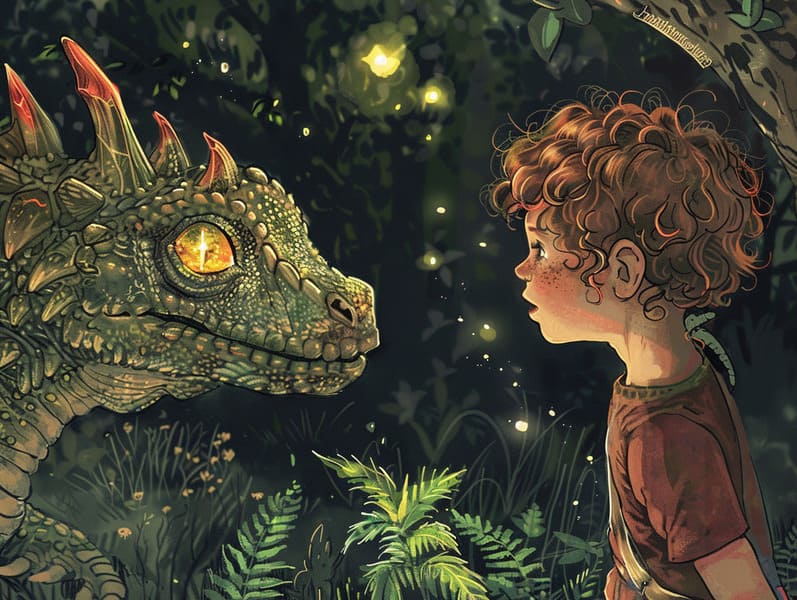The Dawn of Traditional Fairy Tales and the Everlasting Elegance.
The Dawn of Traditional Fairy Tales and the Everlasting Elegance.
Blog Article

Popular fairy tales have ancient roots. These tales have been transmitted from one generation to the next ages before they were ever put on paper. They arose from a variety of societies, including Western traditions. They were initially conveyed among grown-ups, often carrying themes and messages concerning the societal norms and beliefs of the time.
The Grimm brothers, Jacob and Wilhelm (the Grimm brothers), were among the first to gather and publish many of these beloved tales. Their anthology, "Grimm's Fairy Stories," included narratives like "Ashenputtel," "The Bread Crumb Trail," and "Little Snow White," which have since become mainstays in the world of beloved fairy tales. Similarly, H. C. Andersen's fanciful tales, such as "The Mermaid's Tale," and "The Little Duckling," have stolen hearts worldwide, cementing their place in the pantheon of iconic fairy tales.
Despite their age, fairy tales remain as applicable as ever, especially as kids' bedtime tales. These magical stories are now available in many formats, including beautifully illustrated books, whimsical animations, and internet fairy tales.
Their lasting appeal can be connected to several magical reasons:
Ethical Lessons: Classic fairy tales often teach important moral lessons. Tales like "The Story of the Boy Who Cried Wolf" teach the merit of integrity, while "The Story of the Tortoise and the Hare" stress the traits of resolve and humility. These narratives offer kids clear distinctions between good and bad, forming their moral compass in a subtle yet significant way.
Sympathy and Perception: Timeless fairy tales frequently portray heroines facing difficulties and adversities, stimulating audiences to sympathize with their struggles and cheer for their triumphs. For instance, "Beauty's Beast" reveals the benefit of looking past the exterior to realize the inner spirit of a individual, encouraging perception and understanding.
Cultural Perception: Many old fairy tales are steeped in the cultural contexts from which they blossomed. Immersing in these fairy tales can provide illuminating insights into different traditions, advancing a sense of cultural understanding and knowledge.
Inventiveness and Fantasy: The magical elements in classic fairy tales—talking beasts—generate children’s dreaming abilities. These stories transport readers to fantasy realms, awakening fantasy dreams and a sense of marvel that continues a lifetime.
Timeless fairy tales are not only mesmerizing but also educational. They function as magical tools in developing various mind and heart abilities in young ones. When timeless fairy tales are narrated, they foster language skills by presenting new terms and meanings and complicated sentence structures. This practice also advances auditory perception and concentration, as little ones remain attentive, anxious to see what happens next.
Furthermore, talking about the themes and characters of old fairy tales can strengthen cognitive skills and cognitive skills. Children are led to discern patterns, foresee events, and understand cause and effect. These debates also facilitate young ones convey their thoughts and feelings, nurturing their emotional intelligence.
In today’s digital era, the accessibility of online storybooks has made these fairy tales more attainable than ever. Internet sites and apps share vast collections of old fairy tales that can be experienced or listened via anytime, anywhere. Fairy tales voiced are particularly widespread, sharing an delightful method for young readers to enjoy these mesmerizing stories. Sound books and spoken videos bring characters and settings to life, often paired with whimsical musical scores and soundtracks that boost the tale journey.
The timeless allure of classic fairy tales lies in their ability to modify to current times while continuing with their main lessons. Contemporary versions of these fairy tales often present more different protagonists and modern settings, making them accessible to today’s audience. However, the central morals of valour, humanity, and fairness remain unchanged, continuing to connect with kids of all ages.
Traditional fairy tales also offer a sense of familiarity and recognition. They serve a well-structured narrative with a plain beginning, middle, and end, often coming to a close with the closure of conflicts and the triumph of good over bad. This certainty can be encouraging for children, presenting a sense of solidity in an dynamic more info world.
Classic fairy tales continue to fascinate and enlighten new generations, maintaining their mystique and applicability in modern society. As children's night stories, they introduce a perfect blend of charm and enlightenment, boosting moral values, empathy, and creativity. The proliferation of free fairy tales online and the likability of fairy tales spoken affirm that these timeless tales remain attainable to new generations.
By sustaining and recounting these fairy tales, we continue to extol the rich tapestry of creativity and cultural heritage. Whether you are exploring a vibrantly illustrated book, exploring a web collection, or playing an sound book, the grandeur of famous fairy tales is always within reach. These fairy tales point out of the enduring nature of fairy tales and its ability to tie us across time and space.
No matter if you are delving into a richly illustrated book, perusing a cyber collection, or listening to an audio story, the grace of children's fairy tales is always within reach.
These fairy tales point out of the everlasting effect of fairy tales and its ability to unify us across eras and regions, establishing a link that delights and instructs alike.